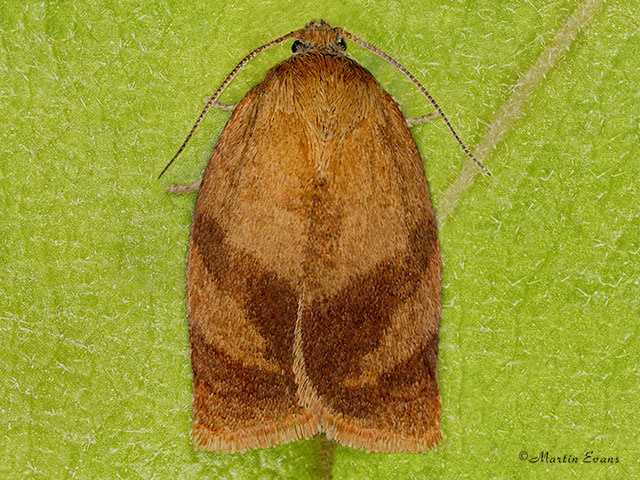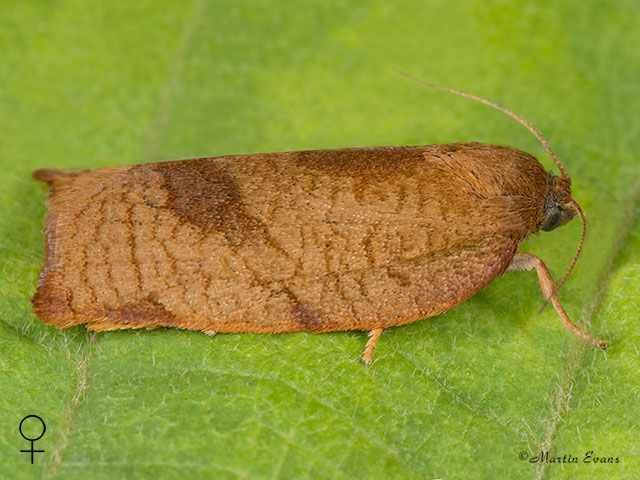Tortricidae
49.030 Carnation Tortrix Cacoecimorpha pronubana (Hübner, [1799])
Common
Similar species:
Forewing: M 7 to 9mm, F 8 to 12mm
Habitats: Gardens, woodland and hedgerows.
Habits: The moth is easily disturbed in the day and flies in sunshine. The moth comes to light.
Foodplant: The polyphagous larva either folds a leaf, spins terminal or lateral leaves of a shoot or spins seed-heads together from where it feeds on Sea Buckthorn, Japanese Spindle, Bay, Tamarisk, Wood Spurge, Tomatoes, Fuschia, Robinia, Carnations, strawberries and many other trees (including conifers), shrubs and herbaceous plants. It can be a pest in greenhouses. There are two overlapping generations. The autumn larvae may pupate or overwinter. Pupation takes place in the spinning.



